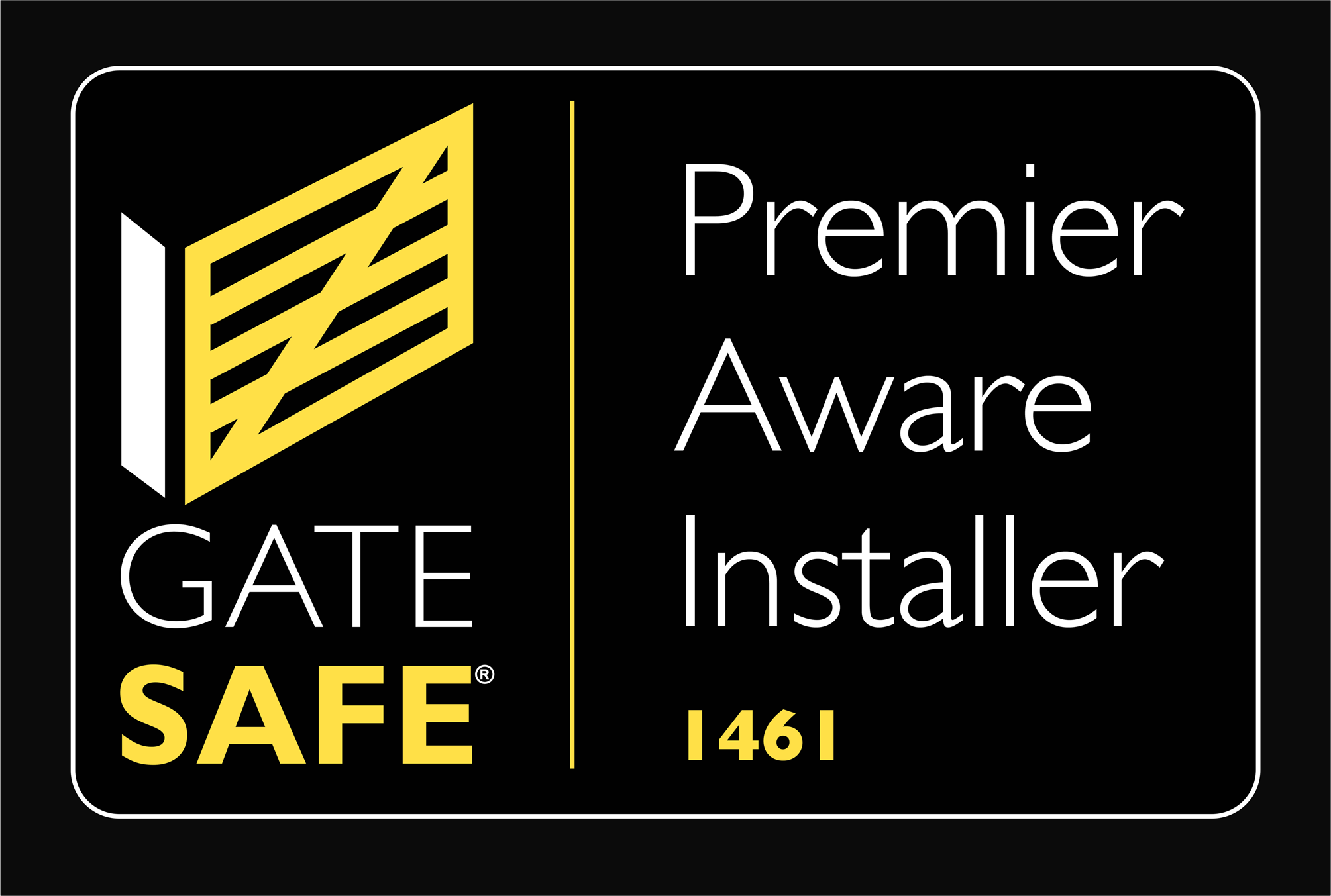 GATE SAFETY
GATE SAFETY
Gate safety is paramount within our industry following several tragic deaths of both children and adults and the successful
prosecutions brought against installers, system managers and owners of unsafe gates which have been involved in these preventable accidents.
SJT Auto Gates are committed to providing you and your business with the correct equipment, training and documentation to ensure compliance with these standards
and the industry's leading codes of practice.
Further information can be found on websites from the UK’s leading gate safety organisations.
We have undertaken the DHF gate safety training diploma.
We are a Premier member of Gate Safe.
HOW DO I KNOW IF MY GATE IS SAFE?
We would never advocate using a child as a test piece, but applying the following principles can
easily explain if your gate is safe or not without specialist knowledge.
If a child were holding onto the moving gate could they be trapped between, under or against something by the moving gate leaf, or if on a sliding gate be pulled into its support posts
and the gate continue to operate trapping and crushing the child? If the answer is yes, then it is unsafe.
WHAT ARE THE RISKS AND WHAT CAN BE DONE?
Crushing, trapping and being drawn into moving gates among other risks have to be protected
against, and a gate risk assessment by SJT Auto Gates can highlight any safety issues with your gate.
There are many well installed automatic gates still in operation which could have been fitted well over 20 years ago by established companies to the best practices at the time, or fitted in
recent years by people who do not understand or choose to ignore the requirements. Both cases are likely to result in unsafe gates.
Most people will not see the hazards, especially in a domestic environment when used with care and with common sense, but injuries caused by these gates has proven fatal when children and
adults have been trapped within them.
Photocell sensors that prevent the gate from closing if blocked are not a safety device to protect from crushing and trapping, and on their own will not result in a safe gate.
Most gates will now have rubber safety edges that will be fitted to areas of crushing and trapping etc. that will stop the gate when pressed, immediately removing the hazard.
Flexible hinge guards can be fitted to protect reducing hinge gaps, most modern gates will have inbuilt force limitation so that it will stop the gate with very low force if someone is
trapped. It is usually a combination of all these devices that makes up a safe gate.
Particular attention is to be paid to the hinges on the gate. Are they secure and in good order? Could a child put their arm—or worse still, their head—into the gap between the gate and
post, and the gap reduce when opening? The forces generated at this point are massive and would certainly cause serious—if not fatal—injury.
By choosing SJT Auto Gates you can be assured that all our gates are designed in a way to remove some of the hazards without the need for protective devices where
ever possible, and having the knowledge and experience to specify and fit the correct safety device to minimise risk of injury elsewhere. The system will be CE approved and all the relevant
documentation and end user training are provided upon completion.
Further information and guidance can be found by following these links:
For commercial and industrial clients -
hse.gov.uk/work-equipment-machinery/powered-gates/responsibilities
For domestic home owners - hse.gov.uk/work-equipment-machinery/faq-powered-gates